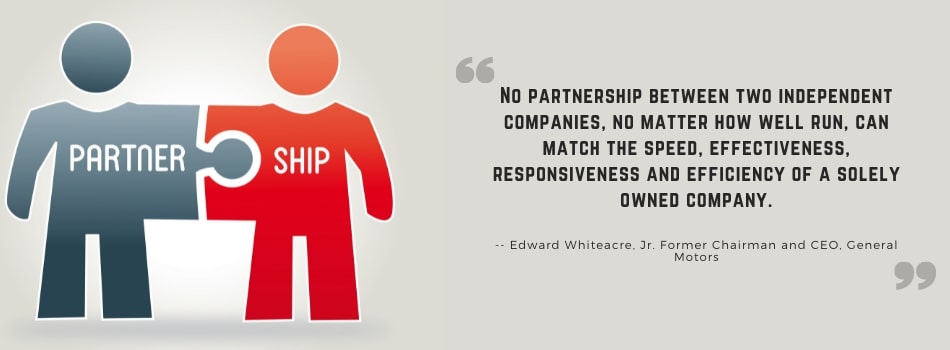[ad_1]
Long Island, with its treeless expanse known as the Hempstead Plains, proximity to Manhattan, and gateway to the country and the European continent by means of the Atlantic Ocean, gave rise to numerous, once-famous aircraft manufacturers, including the American Aeronautical Corporation, the American Airplane and Engine Corporation, Brewster, Burnelli, Columbia, Cox-Klemin, Curtiss, EDO, Fairchild, Grumman, Ireland, the LWF Engineering Company, Loening, Orenco, Ranger, Republic, Sikorsky, Sperry, and Vought. Producing airplanes, powerplants, and components, they built pioneer designs and biplanes during the 1910s and 1920s, introduced significant advancements during the two-decade Golden Age between 1919 and 1939, and churned out military fighters that were considered integral elements in the arsenal of democracy during the Second World War.
Although these East Coast companies were but shadows of those on the West Coast, such as Boeing, Douglas (later McDonnell-Douglas), and Lockheed, which endowed the world with piston, turboprop, pure-jet, and turbofan passenger-carrying airliners, their Long Island counterparts produced a few notable types in this category.
American Airplane and Engine Corporation:
The American Airplane and Engine Corporation’s first-and, in the event, only-airliner was the Pilgrim 100, which was conceptualized by Fairchild, but was subsequently continued by the new company, itself a division of the Aviation Corporation. It planted its roots in the former Fairchild factory at Republic Airport in 1931. It represented, to a degree, the influence an aircraft manufacturer could exert on an airline.
William Littlewood, general manager of the original Fairchild Engine factory, and Myron Gould Beard, a pilot and engineer there, ultimately took up employment at then-named American Airways (now American Airlines) and the former’s first significant assignment was to develop specifications for a cost-effective airliner. “Airliner” then signified no more than a dozen passengers.
“Out of this assignment came the Pilgrim, the first commercial transport to be designed according to an airline’s specifications,” according to Robert J. Serling in Eagle: The Story of American Airlines (St. Martin’s/Marek, 1985, p. 19). “It was a single-engine plane carrying nine passengers and flown by a single pilot. The cockpit was inaccessible from the cabin; messages to the passengers were passed through a sliding panel in a bulkhead.”
Principally designed by Fairchild Chief Engineer Otto Kirchner and Project Engineer John Lee, it was the result of Avco’s $35,000 study to replace the existing single-engine types that proved too small for American’s needs, while the trimotors offered too much capacity. The initial, 15-aircraft order supplied the carrier’s Embry-Riddle, Southern, and Universal divisions.
Powered by a 575-hp Pratt and Whitney, nose-mounted R-1340 Wasp engine, the Pilgrim featured a high, straight, fabric-covered wing; three passenger windows and a fourth at the top of the exit door on either side of its fuselage; two single-wheel main undercarriage bogies truss-rigged from the wing; a tailwheel; and an enclosed, single-person cockpit and nine-passenger cabin. The production 100A version was equipped with a 575-hp Pratt and Whitney Hornet B-16 engine, which was replaced by the equally-rated Wright Cyclone R-1820 radial on the 100B that itself introduced a larger vertical tail. American also operated this variant.
Featuring a 39.2-foot overall length and a 57.5-foot wingspan, it carried a 2,150-pound payload and had a 7,100-pound gross weight. Range was 510 miles. Cruising speed was 118 mph. And its service ceiling was 13,600 feet.
Of the 26 Pilgrims produced, American operated 22 100As and 100Bs, and the US Army Air Corps flew four designated Y1C-24, employing them on light cargo and supply missions. In their later aeromedical evacuation role, they accommodated four liter patients.
Former American Pilgrims found favor in Alaska.
“Pilgrim aircraft were a favorite among Alaskan bush pilots during he time when air transportation was establishing superiority over dog teams, steamboats, and railroads in transporting passengers and freight in the territory of Alaska,” according to the National Register of Historic Places’ Inventory Nomination Form.
Because of their rugged reliability, they established an intra-state aerial infrastructure, more than half of the civil and military Pilgrims providing passenger, cargo, supply, and mail lifelines to remote outposts and isolated communities surrounded by ground-inaccessible terrain between 1936 and 1938, operating in harsh climates, and alighting on ill-equipped fields with wheels and aquatic surfaces with floats alike. Bush pilots flew them well into the 1960s.
Because of the Great Depression, the American Airplane and Engine Corporation ceased operating in mid-1932 and once again reverted to its Fairchild foundation.
Burnelli:
Only a pair of very unique aircraft emerged from the workshop of Vincent J. Burnelli, who flew two gliders before taking root in Amityville in 1920. But they reflected his advanced design philosophy.
Aside from serving as the common attachment point for its aerodynamic surfaces and the load-carrying location of its pilot, passengers, and cargo, a fuselage, he believed, needed to compensate for some of its drag by augmenting lift, leading him to create a camber-incorporating, airfoil-shaped lifting body.
Featuring a plywood frame covered in duralumin, it had a 14-foot wide, slab-sided shape, with upper and lower curvatures that tapered to a knife-life edge at its rear, giving it a 41.2-foot overall length. But its 504-square-foot surface produced almost a third of its lift and its width facilitated the installation of two side-by-side, 10.4-foot separated, nose-mounted, 400-hp liquid-cooled Liberty XII V-12 piston engines that drove five-foot, 1.5-inch, three-bladed propellers; two side-by-side cockpits, each for a single pilot and mechanic; and a cavernous interior for up to 30 passengers or oversized cargo.
Designated RB-1, for “Remington-Burnelli,” it first flew from Curtiss Filed on June 2, 1921, but the damage it sustained from a storm while on the ground led to its improved RB-2 successor of 1924
Powered, in this case, by two 650-hp Galloway Atlantic engines and introducing improved control surfaces, it represented the first widebody, the first widebody biplane, the first twin-engine, nose-mounted aircraft, the first airfoil-shaped lifting body, and the first freighter, the latter of whose capability was demonstrated in 1925 when it transported an Essex automobile, serving as an aerial showroom for the Hudson Motor Car Company, again both firsts for an airplane.
Although it introduced a considerable number of advanced features, it was slow and sluggish and failed to attract the necessary funding for the development that could have led to the RB-3.
Curtiss Aeroplane and Motor Company:
The Curtiss Aeroplane and Motor Company, reflecting the name of its founder, Glenn Hammond Curtiss, produced a handful of passenger-carrying transports on Long Island, after it established a research and development facility there in 1918. One of them was the Eagle.
Based upon the structural foundation laid by the Oriole, but enlarged, it was intended as a post-World War I airliner and introduced several advanced features that distinguished it from the many converted, open-cockpit, military biplanes often used for such a purpose, including a streamlined, monocoque fuselage; an enclosed cockpit; an enclosed cabin with eight to nine leather upholstered seats, curtained glass windows, dome lights, and an early air stair; three-bay, unstaggered, equal-span biplane wings; a conventional tail; and two sets of tandem main wheels, as well as the standard tail one. First of its three versions was the result of the number of their engines.
The Eagle I, for example, with a 36.9-foot length and a 61.4-foot wingspan, was the trimotor variant, initially powered by three 150-hp Curtiss K-6 pistons, although production aircraft featured 160-hp C-6s. With a 7,450-pound gross weight, it had a 475-mile range and a 100-mph speed.
Powered by two 400-hp Curtiss C-12s, the twin-engine Eagle II offered improved performance, with a 124-mph maximum speed and a 750-mile range. However, only one was built and it crashed on its maiden flight.
Three of the single-engine Eagle IIIs, powered by a 400-hp Liberty 12, saw US Army Air Corps service in the personnel transport and aeromedical role. The type notched up a payload record when it carried 3,533 pounds over Curtiss Field in 1920.
Although the type introduced numerous advancements, only 20 or so were, in the end, produced because of the failure of the envisioned commercial market to develop.
Of greater notoriety was another Long Island-born airliner, the Curtiss Condor, of which there were two major versions. Both represented transitional technology, serving as bridges between the bi- and monoplane, examples of the latter including the Boeing 247 and the Douglas DC-2.
“In most respects, (the Condor) was a step backwards in aircraft design-a twin-engine biplane whose forest of struts and wires provided built-in headwinds,” Serling commented (op. cit., p. 55).
Although it was slow and lumbering and clung, like an airplane that could not relinquish its biplane past, to the features that categorized it, it was considered the first sleeper transport, whose comfort emulated the railroad’s Pullman berths, a necessity on stretches that required the morning set of the alarm to reach throughout the night.
Advancement took root in the Model 32 of 1933. Powered by two 710-hp, nine-cylinder Wright SCR-1820-F3 radials that turned three-bladed, variable-pitch propellers and thus reduced the noise and vibration that otherwise propagated through the cabin like a tuning fork, the Condor II, the result of frame-and-fabric construction, had a 49.6-foot length (shorter than its Condor I predecessor), and an 82-foot wingspan built with a tubular spar. Only a single vertical and horizontal tailplane was employed.
Accommodation in a cabin blanketed with 70 pounds of soundproofing material was for 15 day or 12 night-berth passengers, who were attended to by a then-called stewardess.
First flying on January 30, 1933, it had a 17,500-pound gross weight, an 840-mile range, and a 22,000-foot service ceiling.
American, which made a $500,000 order for ten, placed them into sleeper service between Ft. Worth and Los Angeles, which constituted a portion of its transcontinental route, on May 5, 1934, offering a competitive advantage over TWA and United, which could not offer comparable comfort. It was also used to increase its daily round trip frequencies between New York and Chicago in September, advertising in its June 15, 1934 system timetable, “The world’s first complete sleeper planes.” One such route included Dallas, Ft. Worth, Abilene, Big Spring, and El Paso in Texas, Douglas, Tucson, and Phoenix in Arizona, and Los Angeles in California.
“Passengers loved the Condor’s roomy cabin,” according to Serling (ibid, p. 56). “In American’s configuration, the big biplane carried 18 passengers by day and could accommodate 14 in the surprisingly spacious berths. Compared to the noisy, rattling Fords and cramped Stinsons and Vultees, the Condor interior was palatial and compensated for the airliner’s abysmal performance.”
Of the 45 produced, which was not an insignificant quantity for their time, they wore the colors of Swissair in Europe and Avianca and LAN-Chile in South America, and served in military roles with the Army Air Corps, the Navy, and the Marines in the US and with the air forces of China, Colombia, Honduras, Peru, and the UK elsewhere.
Fairchild Aircraft Company:
Founded by Sherman Mills Fairchild, the Farmingdale-based Fairchild aircraft Company arose from the need to design a suitable aerial platform that was both stable and possessed sufficient internal space from which to capture shots with the photographic equipment he designed and built during the 1920s. Since none of the existing airframes were appropriate enough, he created his own, which took form as the FC-1.
Its longer, light transport FC-2, powered by a 220-hp Wright J-5 Whirlwind, proved both rugged and flexible, operating many missions within diverse geographic and climactic regions, flying in Canada, in the jungles and mountains of South America, and in the bottom-of-the-world, ice-capped Antarctic continent.
It enabled Pan American, only by chance, to operate the Key West-Havana international airmail contract it had been awarded on July 16, 1927. To avoid losing it by failing to do so by the October 19 target, which would have occurred because of the late delivery of the two Fokker F. VIIs it had otherwise ordered for the service, it chartered a float-equipped example, operating a delivery flight to West Indian Aerial Express and named “La Nina.” Loaded with seven 25-pound sacks collectively carrying 30,000 letters transferred from the Florida East Coast-Atlantic Coast Railroad’s “Havana Special” run, it made the one-hour flight from Key West, landing in Havana at 0925 on the October 19 deadline date.
West Indian Aerial Express, which was financially backed by Sherman Fairchild himself, along with Graham Grosvenor, inaugurated service two months later, on December 3, between Port-au-Prince, Haiti, and San Juan, Puerto Rico, with a fleet of FC-2s, explaining its choice of equipment.
Later that month, on December 17, Colonial Western Airways began passenger, mail, and express service with the FC-2 between Cleveland and Buffalo with an intermediate stop in Erie, and extended it to Albany via Rochester, Syracuse, Utica, and Schenectady on June 1, 1928.
The FC-2W, which accommodated six, saw Canadian Colonial Airways service, which operated it between New York and Montreal.
The ultimate evolution of the FC-2-and the best-selling of the version, with 200 built-was the Fairchild 71. Powered by a Pratt and Whitney nine-cylinder Wasp radial engine, it accommodated nine passengers, had a 5,500-ound gross weight, and a 900-mile range.
Suitable for light-transport and airliner service, it was operated by Compania Mexicana de Aviacion, which was founded on August 20, 1924 and inaugurated a Mexico City-Tampico route with it four years later, on April 15. It subsequently also deployed it to Merida on the Yucatan Peninsula in October.
Coastal Airways commenced six-passenger, float-equipped Model 71 service from North Beach Airport, where it offered connections with other flying boat operators, to Albany up the Hudson River on May 28, 1929.
Pacific Alaska Airways operated the Fairchild 71, while other carriers pioneered interior routes with Stinson Juniors, Travel Airs, and Waco biplanes.
Between 1925 and 1931, the year Fairchild relocated to Maryland, it produced an admirable 369 aircraft of all types.
Grumman Aircraft Engineering Corporation:
Founded by Leroy Randle Grumman, who was once plant manager of the Loening Aircraft and Engineering Corporation, on January 2, 1930, the Grumman Aircraft and Engineering Corporation itself planted its initial-although hardly sedentary–roots in Baldwin, moving to progressively larger facilities-first to Valley Stream eight miles away, then to the Fairchild Flying Field 16 miles away in Farmingdale, and finally to the sprawling Bethpage plant with which it was, for the most part, synonymous, on April 8, 1937. The need for even more space prompted its secondary location at the United States Naval Air Facility designated its “Peconic River” plant, in 1953.
Principally a supplier to the Navy, Marines, and Coast Guard, it produced its famous F2F, F3F, F4F Wildcat, F6F Hellcat, F7F Tigercat, F8F Bearcat, F9F Panther and Cougar, F11F Tiger, TBF Avenger, and F-14 Tomcat series, which were instrumental in the victorious conclusion of several wars.
Although, like Fairchild, it never designed a bonafide “airliner,” a few of its aircraft were operated in this role in limited numbers, three of which were amphibians and one of which was a land-based executive design.
The first, the G-21 Goose, was the company’s first monoplane.
“In 1936, the Grumman Aircraft Corporation of Bethpage was approached by several wealthy Long Island residents who needed a small plane for personal transportation,” according to Stoff (op. cit., p. 29). “They wanted an aircraft large enough to carry their families and baggage on trips, luxurious enough to fit their business needs, and flexible enough to take off and land either from the land or the sea.”
Representing transitional technology, the Goose featured a riveted aluminum structure with a 38.3-foot overall length; a high-mounted wing, which had a 49-foot span and 375-square-foot area, but incorporated aft, fabric-covered sections and control surfaces; two outboard wing floats; two nine-cylinder, 450-hp Pratt and Whitney Junior radials attached to the leading edge; a two-step hull for aquatic surface operations; a conventional tail; two single-wheel, upward-retracting main wheels for nesting in the fuselage sides; and a tail wheel.
The enclosed cabin, located behind the two-person cockpit, accommodated up to eight and was entered by an aft, port door, and convenience was provided by a small galley and a lavatory. Baggage compartments were in the nose and behind the cabin.
“The ease of handling, good stability, and satisfactory performance demonstrated during the trails soon made the Goose a very popular aircraft with civil and military customers alike,” according to Rene J. Francillon in Grumman Aircraft since 1929 (Putnam Aeronautical Books, 1989, pp 96-97). “Moreover, it proved to have a very strong airframe, thus endowing many of the 345 aircraft built by Grumman between May 1937 and October 1945 with a long service life.”
Its $60,000 price tag did not deter orders.
Aside from providing, as intended, comfortable transportation from water-fronting Long Island mansions to Wall Street and being used for similar, private purposes in the rest of the country, Canada, and the UK, this forerunner of the modern turboprop and jet executive transport had commercial application, as indicated by KNILM, KLM’s East Indian subsidiary, operation of it in March of 1940.
In the Caribbean, St. Croix-based Antilles Air Boats operated 18 G-21s, linking several islands as of February 1964, and Mackey Airlines connected Miami with the Bahamas with its own G-21As until Eastern acquired it in 1967.
Two carriers used the type for the short, 21-mile hop from the California coast to Catalina Island-Avalon Air Transport from Long Beach and Catalina Seaplanes from San Pedro Harbor.
Of the 13 G-21s Alaska Coastal Airlines operated, one was turboprop-retrofitted.
Resembling, in overall configuration, the G-21 Goose, the G-73 Mallard was designed as larger, post-war feederliner for inter-island or mainland-to-island passenger service. Work on it began in December of 1944.
Incorporating some advanced features, it had a stressed-skin, two-step fuselage, giving it a 48.4-foot overall length; a high, float-equipped wing with wingtip fuel tanks, resulting in a 66.8-foot span and a 444-square-foot area; two 600-hp Pratt and Whitney R-1340-S3H1 radials that turned three-bladed, fully-feathering propellers; and a passenger capacity of between ten and 15, the latter attained by replacing the aft lavatory and baggage compartment with five seats. Its gross weight was 12,750 pounds. Range, with an 810-pound payload, was 1,380 miles and cruise speed was 180 mph. A noted deviation from the Goose design was its tricycle undercarriage.
Registered NX41824, the first G-73 Mallard first flew on April 30, 1946, four months before its September 8 type certification.
Although it mostly served in the corporate role, the aircraft, which was underpowered because of the lack of a more suitable powerplant, was ordered by Air Commuting, the only carrier to do so for a factory-fresh example. But it did enjoy a respectable second-hand airline career with smaller companies in Alaska, Canada, the Caribbean, Australia, Japan, and French Polynesia. A significant operator was Chalk’s.
Grumman’s significantly overestimated market size for the type, however, resulted in a paltry 59-aircraft production run between 1946 and 1951.
Grumman’s first land-based executive aircraft counterpart was the G-1.
A radically divergent “design solution” that was to incorporate both performance and economy, the low, straight-wing monoplane, designated Model 159, ultimately sported a 78.4-foot span, but power transitioned from the piston engine to the turbine, in light of the speed and efficiency of the emerging Vickers Viscount, the world’s first turboprop airliner, to satisfy market study calls for 350-mph speeds.
The engines, in the event, were versions of those that powered that British design-in this case, 2,210-shp Rolls Royce Dart 529-8s that drove four-bladed propellers, giving it its 334-mph cruise speed. Its maximum takeoff weight, range, and service ceiling were, respectively, 35,000 pounds, 2,500 miles, and 36,900 feet.
Unlike its amphibious counterpart, the Goose, it had a conventional fuselage, in which ten business and up to 24 three-abreast, high-density passengers sat, with views through circular windows, and the aircraft itself sat on a retractable, tricycle undercarriage.
Although its civil version served in the corporate role with such companies as General Electric, Martin Marietta, Northrop, Ford, General Motors, and Texaco, its superior performance proved an expensive operation for regional airlines, which could purchase similarly-powered Rolls Royce RDa.7 Fokker F.27-200s and Hawker Siddeley HS.748-2s with more than double its capacity.
Nevertheless, the type saw some airline operations in Canada by Wardair, in the US by Bonanza, Golden West, and Zantop, in the UK by Birmingham Executive, in France by Air Provence, and in Italy by Aeri Speciali, which served the Bologna-Birmingham route with it. Installation of an aft, port, upward-opening door enabled DHL and Purolator to transport small packages with it.
During the 11-year period between August of 1958 and May of 1969, 200 G-1s were built.
Of greater regional airline application was the 9.6-foot stretched, Savanah, Georgia-based Gulfstream American G-1C Commuter, which took over the G-1 program. With a 7,600-pound payload capability and a 600-mile maximum payload range, the aircraft, resulting from conversions of existing airframes, accommodated 38 three-abreast passengers at a 29-inch seat pitch, with a forward lavatory and an aft, 144-square-foot baggage compartment.
The first stretched G-1C, registered N5400C, first flew on October 25, 1979, received its FAA certification the following year, and was launched into service by Air North, which operated a New York State route system and provided both origin-and-destination and connecting service at La Guardia Airport. The type also wore the liveries of Air US and Air Chaparral.
Republic Aviation Corporation:
The Republic Rainbow was an example of a Long Island-spawned airliner that had significant potential, but never materialized in reality.
The Republic Aviation Corporation itself traces its roots to Seversky Aircraft, which was established by the Russian emigre of the same name. Possessing a sixth sense for high-speed aerodynamic designs, he produced the P-35 fighter that set speed records and won racing awards. He subsequently relocated to Farmingdale facilities.
Despite his design capability, his business and marketing talents were severely lacking, resulting in abysmal sales and prompting his Board of Directors to ironically vote him-the company’s very founder-out during his 1938 sales trip to England.
Reorganized and renamed the Republic Aviation Corporation, it proved the necessary tactic to reverse its fortunes, leading to Army Air Corps orders for its P-43 Lancer fighter. Synonymous, however, with the P-47 Thunderbolt, which was nicknamed “The Jug,” it produced the first piston aircraft able to achieve a 400-mph speed and notched up sales that almost reached the 10,000-mark, as the company became the second-largest fighter supplier to the Air Corps.
Reflecting this speed capability was the XF-12 Rainbow. Designed to fulfill the Army Air Corps’ Air Tactical Service Command’s needs for a high-speed and -altitude reconnaissance aircraft, particularly to record enemy installations over Japan, the streamlined, quad-engine, low-wing aircraft, emulating the graceful lines of the Lockheed Constellation, had commercial airliner potential.
“The Rainbow, with a design altitude of 40,000 feet, a payload of 12,000 pounds, and a cruising speed of about 400 mph, held out great promise,” according to Davies (op. cit., p. 328). “Pan American and American Airlines placed provisional orders. But severe problems with the engine and controls caused abandonment of the project.”
The RC-2, its commercial counterpart, would have introduced a five-foot fuselage stretch, a 46-passenger capacity, a lounge, a galley, uprated engines, and an increased fuel capacity. It would have been a serious-and superior-performance-contender as a transcontinental airliner in competition with the Lockheed Constellation itself and the Douglas DC-6.
“Officially designated the Republic XF-12, the Rainbow was a sleek, needle-nosed speedster, whose specifications called for a 400-mph cruising speed, nonstop transatlantic range, a then-unheard-of altitude capability of 40,000 feet, and a passenger capacity of 46,” according to Serling (op. cit., p. 197).
The RC-2’s engine difficulties, a rise in its acquisition price, and the lower operating costs of widely available, war-surplus C-54s (the military version of the DC-4), resulted in the cancellation of American’s and Pan American’s provisional orders, dousing Long Island’s airliner light and all but eliminating its chance of competing with the West Coast aircraft manufacturer giants.
Saab-Fairchild:
Aside from the Grumman Goose, the Mallard, the G-1, and the G-1C, Long Island was the birthplace of a conceptual commuter airliner, at least in collaboration.
Its origins-the need for a 30-passenger type to slot in between existing 19- and 50-seaters-led Saab-Scania of Sweden, which had had mostly military experience, to sign an agreement with Fairchild, which had already had exposure to this commercial sector with its own Swearingen Metro. The former would produce the fuselage and the vertical stabilizers, as well as carry out final assembly, in Linkoping, while the latter would build the wings, the engine nacelles, and the tailplane. Although the venture would reduce Saab’s costs of what proved to be its largest industrial program, Fairchild’s marketing and familiarization with the commuter segment were also considered advantages.
“An agreement signed on January 25, 1980 between Saab-Scania of Sweden and Fairchild Industries of the USA served to launch the SF-340 commuter airliner as the first fully collaborative venture between an American and a European company,” according to William Green and Gordon Swanborough in An Illustrated Guide to the World’s Airliners (Arco Publishing, Inc., 1982, p. 168).
The resultant clean, low-wing design incorporated a pressurized, circular cross section fuselage for 34 three-abreast passengers, provisioned with a small galley, a lavatory, and enclosed overhead storage compartments on its seat-pair side, giving it a 64.9-foot overall length; a straight, high-aspect ratio wing of 70.4-foot span and 450-square-foot area with single-slotted trailing edge flaps; two 1,675-shp General Electric CT7-5A turboprops; a conventional tail; and a retractable, tricycle undercarriage.
It first flew on January 25, 1983 and was inaugurated into service by launch customer Crossair of Switzerland the following year. Both Business Express and later American Eagle offered multiple daily flights from nearby Long Island MacArthur Airport to Boston with it.
After Fairchild completed 108 ship sets in Farmingdale, it terminated its agreement with Saab Scania and withdraw from all civil projects, leaving the very successful commuter airliner to be re-designated S-340 in 1985.
Sikorsky Aero Engineering Corporation:
Like Alexander P. de Seversky, Igor I. Sikorsky immigrated from Russia to the US, arriving on American shores with dreams, drives, and aeronautic blood coursing through his veins, but little more than lint in his pockets.
Five years after stepping ashore on this side of the Atlantic, in 1924, he planted Long Island roots that grew into the Sikorsky Aero Engineering Corporation and in it concentrated on one of two aircraft types with which he would become synonymous-the amphibious flying boat, with the other being the rotary-wing helicopter.
Although the first of the former, the S-34, nosed into Long Island Sound near College Point on May 31,1927 after one of its two engines failed at 800 feet, the succeeding S-38, the theoretical second designed between May and July of the following year, fared far better. Functional it was. Art it was not.
Amphibiously ambedetrix-if there is such a term-it was a combined aquatic and air “structure” that displayed the decidedly separate, but somehow connected aspects needed to operate in both realms: a short, hull-shaped fuselage and a high, straight wing, v-strut attached to the smaller, lower, hull-extending one. From the upper were slug two Pratt and Whitney Wasp radials and from tis trailing edge twin booms that ended at the tailplane itself, consisting of a horizontal stabilizer from which two vertical surfaces extended both above and below.
“While considered an ugly duckling by some, it quickly proved to be one of the most efficient and practical airplanes of its time” according to “The Pan Am Connection” article in the June 2000 issue of the Sikorsky Archives News. “A Navy test pilot of the time called it a better ship than any other of its size and power.”
It saw considerable airline service.
Because of its capability, it was instrumental in Pan American’s Caribbean, Central American, and South American route development, beginning with the October 13, 1928 operation of it. Air field shortage proved no obstacle. As Andre Priester, its chief engineer, pointed out, “Flying boats carried their own airports on their bottom.”
Pan American ultimately operated 38 of the 111 produced.
The type opened up international passenger service on May 22 of the following year, bridging the 2,064 miles to the Canal Zone during a 56-hour journey, although it required overnight stops in Belize and Managua, both in Central America.
Six months later, Inter-Island Airways, which was founded in January, commenced scheduled service from Honolulu to Maui, Hilo, and Kauai with two eight-passenger S-38s, effective November 11. Molokai and Lanai were served on request.
Retrospect:
While Long Island aircraft manufacturers could never vie with the major airliner producers on the West Coast, their low-capacity, multi-role and -mode, air, water, and ground, land-based and amphibious designs, often crossing the bridge from military to civil and commercial operation, proved instrumental in pioneering early US and international passenger transporting routes in regions as diverse as Alaska, the Hawaiian Island, Europe, the Caribbean, Central America, South America, and the Pacific.
Article Sources:
Davies, R. E. G. Airlines of the United States since 1914. Washington, DC: Smithsonian Institution Press, 1998.
Francillon, Rene J. Grumman Aircraft since 1929. London: Putnam Aeronautical Books, 1989.
Green, William, and Swanborough, Gordon. An Illustrated Guide to the World’s Airliners. New York: Arco Publishing, Inc., 1982.
Serling, Robert J. Eagle: The Story of American Airlines. New York: St. Martin’s/Marek, 1985.
Stoff, Joshua. Historic Aircraft and Spacecraft in the Cradle of Aviation Museum. Mineola, New York: Dover Publications, 2001.
“The Pan Am Connection.” Sikorsky Archives News. Stratford, Connecticut: Igor I. Sikorsky Historical Archives, Inc., June 2000.
Waldvogel, Robert G. “Long Island’s Aviation Heritage.” AAHS Journal. American Aviation Historical Society, Winter 2020.
Waldvogel, Robert G. “The History of Republic Airport.” EzineArticles. July 27, 2017.
Waldvogel, Robert G. “The History of the Grumman Corporation.” EzineArticles. October 10, 2019.
[ad_2]
Source by Robert Waldvogel















